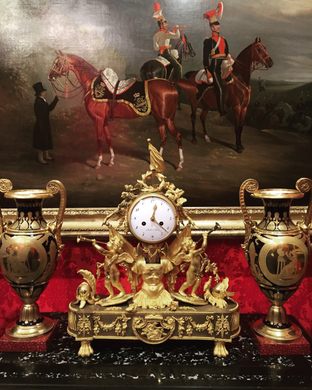David Roche House Museum
A vast and opulent collection of art and show dog memorabilia collected over one man's lifetime.
Hidden behind a tall wall on Adelaide’s Melbourne Street is Fermoy House, the home where the Australian art collector and dog breeder David J. Roche lived for many years. Starting at the age of 17, David amassed more than 3,500 items of artistic and historical significance from all across the globe. His interest in decorative arts, particularly paintings, ceramics and furniture, led to an incredible collection that almost completely filled his home. Clocks, sculptures, embroidery, tea sets, and more cover the walls and surfaces of Fermoy House, which is now a museum honoring Roche’s life and legacy.
David Roche came from a well-off family and began to join his father at dog judging competitions early in life. In 1969, he became the youngest judge—and the first from Australia—at the prestigious Crufts dog show. Martyn Cooke, a friend and antique merchant, once speculated that Roche’s love of art started with paintings of dogs in such show grounds, and his eye for picking perfect dogs extended to selecting pieces of art.
As he grew older, Roche worried about the fate of his collection and set up plans for a private foundation to be created at the time of his death. The David Roche Foundation was started in 1999, and upon Roche’s death in 2013 his dog kennels were removed from Fermoy House to make way for a public exhibition space. Other changes included turning a spare bedroom into a Russian room, and the adjoining ensuite turned into a small library filled with books on showing dogs.
There are a number of exquisite pieces in Fermoy House that cannot be seen anywhere else in the world. (Unsurprisingly, as Roche left a collection that is said to be worth $70-$80 million AUD.) Roche is said to have assembled the greatest collection of English Regency and French Empire art and objects outside of England.
The house itself consists of a number of rooms, centered around different themes. These areas include the Roman room, which was added to the house in the 1970s to hold large Roman statues, the Russian room, with wallpaper styled after Pavlov’s Palace, the Chinoiserie bedroom, and David’s own room and ensuite, which is a testament to his Neoclassical tastes. Dogs and ceramics are displayed in the den, and the dining room contains portraits of military figures and furniture once used by Napoleon.
Know Before You Go
General tour and gallery entry is $20, concession $17. The tour lasts around an hour and a half. Bookings highly recommended before visiting. Parking is available onsite.


















Follow us on Twitter to get the latest on the world's hidden wonders.
Like us on Facebook to get the latest on the world's hidden wonders.
Follow us on Twitter Like us on Facebook